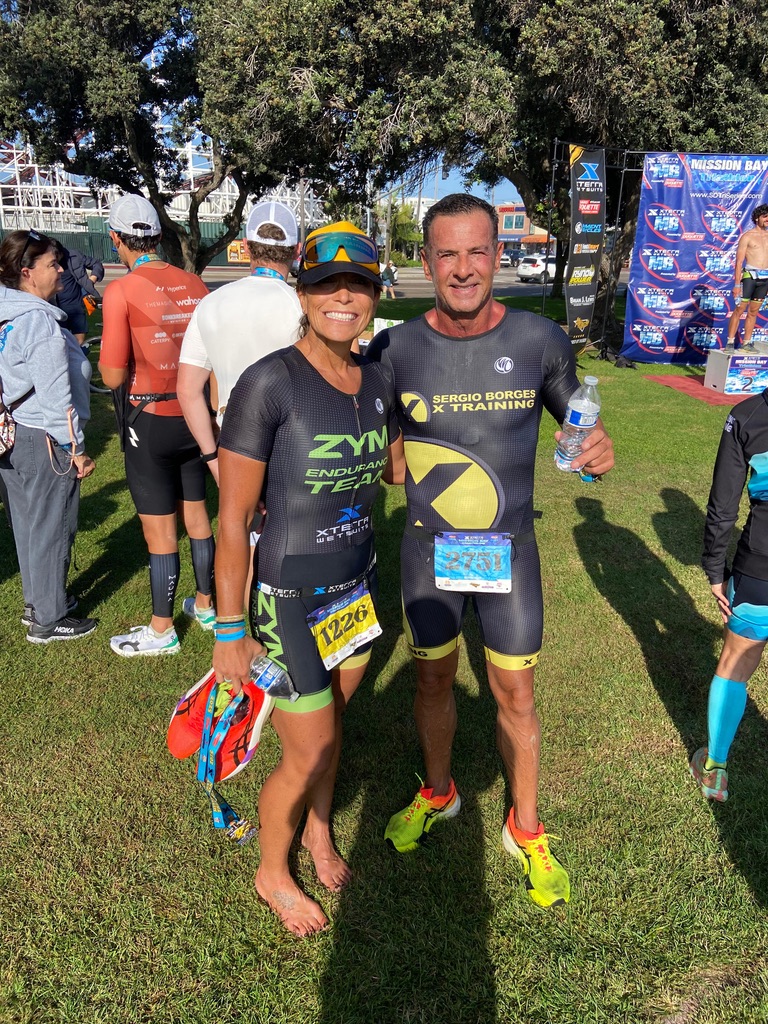Make the Most of Your Off-Season: Improve Mechanical Efficiency, Mobility & Strength
Training, October 15, 2025
For many triathletes, the off-season is a strange time. The races are done, the pressure is gone, and suddenly you’re left wondering what to do next. But the truth is — the off-season isn’t just downtime. It’s the most valuable window of the year to make meaningful improvements that will carry over into your next season.
Make the Most of Your Off-Season: Improve Mechanical Efficiency, Mobility & Strength
For many triathletes, the off-season is a strange time. The races are done, the pressure is gone, and suddenly you’re left wondering what to do next. But the truth is — the off-season isn’t just downtime. It’s the most valuable window of the year to make meaningful improvements that will carry over into your next season.
This is your opportunity to step back from race-specific training and build a stronger, more efficient, and more resilient version of yourself. Let’s break down how to do it.
1. Focus on Mechanical Efficiency
Mechanical efficiency is the art of doing more with less — less energy, less fatigue, and less risk of injury. Over the course of a long triathlon season, small inefficiencies in your swim stroke, pedal stroke, or run form can cost you minutes on race day.
How to improve it in the off-season:
Video Analysis: Record your swim, bike, and run form to identify weaknesses or movement patterns that waste energy.
Drills & Technique Work: Dedicate specific sessions each week to technique rather than volume. For example, swim with paddles or fins to fine-tune your catch and pull, or use single-leg drills on the bike to smooth out your pedal stroke.
Cadence & Stride Work: On the run, play with cadence, posture, and foot strike. Small adjustments now can lead to massive efficiency gains later.
The goal is refinement, not intensity. This is the time to move with purpose, awareness, and control.
2. Prioritize Mobility
Mobility is often overlooked by endurance athletes — until it’s too late. Tight hips, restricted shoulders, and limited thoracic mobility can compromise your mechanics and make you more prone to overuse injuries.
Your off-season toolkit should include:
Dynamic Mobility Routines: 10–15 minutes daily focusing on hips, hamstrings, and thoracic spine.
Yoga or Functional Range Conditioning (FRC): Both are excellent for improving joint control and active range of motion.
Mobility + Strength Integration: Combine mobility with movement — think “world’s greatest stretch” into lunges, or overhead reaches into squats.
Improved mobility allows for better technique, smoother transitions between disciplines, and reduced injury risk.
3. Build Strength That Supports Endurance
Strength training is the foundation that supports all three triathlon disciplines. A well-designed program will improve your power output, stability, and fatigue resistance — especially in the latter stages of a race.
Key principles for off-season strength:
Prioritize Compound Movements: Squats, deadlifts, pull-ups, and presses develop full-body strength and coordination.
Include Unilateral Work: Single-leg and single-arm exercises help correct imbalances that lead to inefficiencies.
Progress Over Time: The off-season is when you can safely increase resistance and focus on building strength without the interference of high-volume endurance training.
Don’t Forget Core Stability: A strong, stable core improves posture, breathing efficiency, and power transfer across all disciplines.
Two to three structured strength sessions per week can completely change your performance trajectory next season.
4. Keep It Aerobic — But Smart
While the focus shifts to strength and mechanics, don’t abandon your aerobic base entirely. Maintain a few low-intensity endurance sessions each week to keep your cardiovascular system primed. This ensures you transition back into race prep smoothly without losing your aerobic fitness.
5. Redefine “Progress”
In the off-season, progress isn’t measured in miles or watts — it’s measured in movement quality, control, and strength.
This is your time to build the foundation that will support higher performance later. Every minute spent improving how you move will pay dividends when the race season returns.
ACT NOW!
Think of the off-season as your personal laboratory — a space to rebuild, refine, and reset.
By focusing on mechanical efficiency, mobility, and strength, you’re not just preparing to race again — you’re preparing to race better than ever before.
And this is where the right guidance truly matters.
Working with an experienced coach who understands how to balance technical refinement, mobility work, and structured strength training will help you get the most out of your off-season — without wasting time or effort on random workouts.
With over 25 years of triathlon coaching experience, I can help you design a personalized off-season plan that enhances efficiency, builds durability, and sets the perfect foundation for your next race season.
Because the next season’s success starts now.

